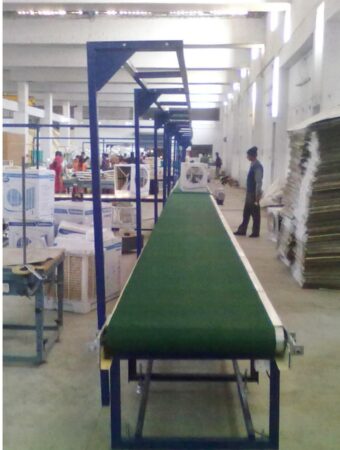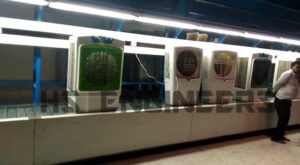Assembly line conveyor is a type of conveyor system used in manufacturing and production facilities to move products and materials along a production line. Assembly line conveyors are designed to move products from one production stage to the next, facilitating the assembly and production process.
Assembly line conveyors can be customized to meet the specific needs of a production facility, and can be configured to move products in a variety of
directions, including straight, curved, and angled paths. They can also be designed to accommodate a range of product sizes and weights.
In addition to facilitating the production process, assembly line conveyors can also improve efficiency and reduce labor costs by automating the movement of products along the assembly line. They can also help to reduce the risk of product damage or loss during the production process. Assembly line conveyors are an important component of many manufacturing and production facilities, helping to streamline the production process and improve overall efficiency.

A cooler assembly line conveyor is a type of conveyor system used in manufacturing or assembly lines to transport products through a cooling process. The conveyor typically consists of a series of rollers or belts that move the products along a predetermined path.
The cooling process can be accomplished through a variety of methods, such as ambient air cooling, forced air cooling, or refrigeration. The conveyor may also include additional features, such as fans or cooling tunnels, to further aid in the cooling process. To design a cooler assembly line conveyor, several factors need to be considered, including the type of product being cooled, the required cooling time, and the desired cooling temperature.
The conveyor must be designed to accommodate the size and weight of the product and to ensure that it moves smoothly and consistently through the cooling process. Proper maintenance and cleaning of the
conveyor are also important to ensure optimal performance and to prevent product contamination. Regular inspection and replacement of worn or damaged components, such as belts or rollers, are necessary to prevent conveyor malfunctions and ensure product quality.

